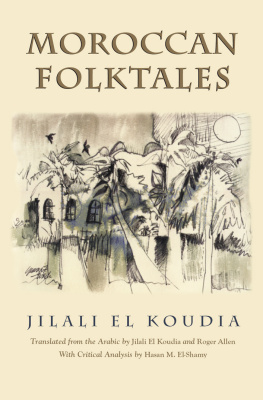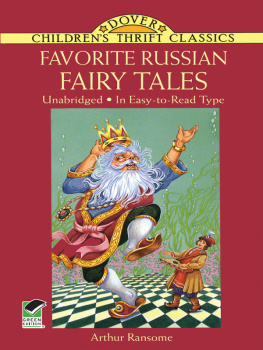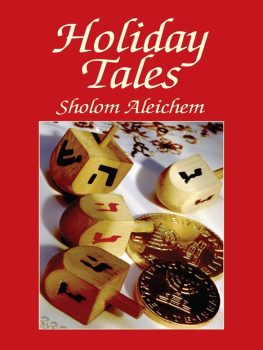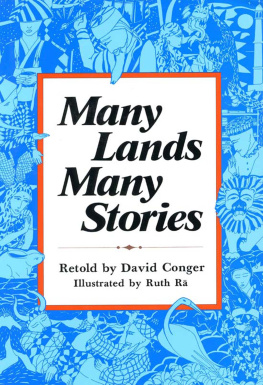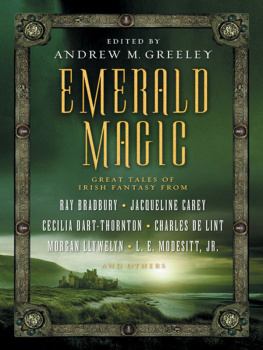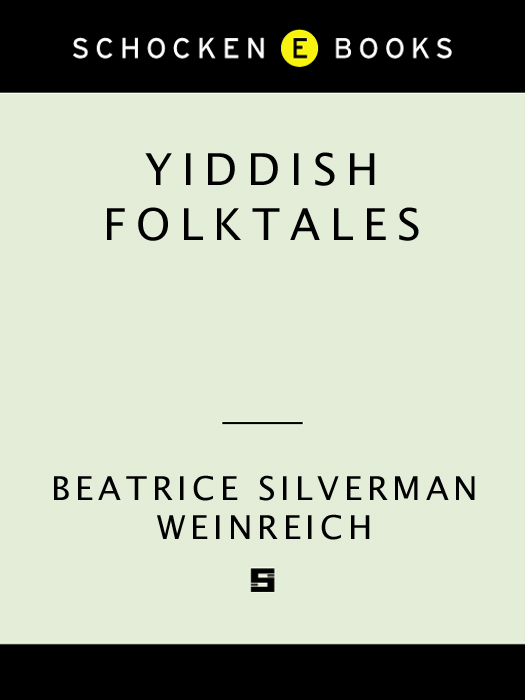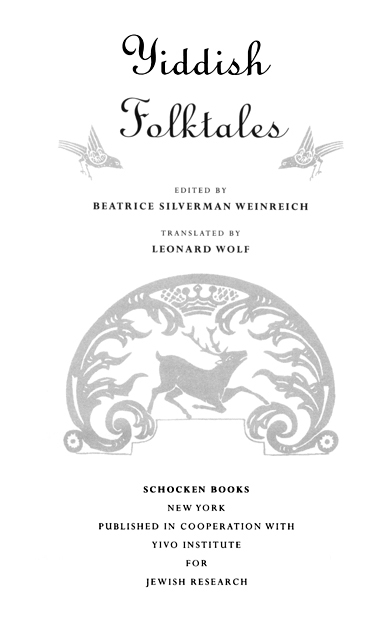Copyright 1988 by YIVO Institute for Jewish Research
All rights reserved under International and Pan-American Copyright Conventions. Published in the United States by Schocken Books Inc., New York, and simultaneously in Canada by Random House of Canada Limited, Toronto. Distributed by Pantheon Books, a division of Random House, Inc., New York. Originally published in hardcover by Pantheon Books, a division of Random House, Inc., in 1988.
All photographs are from the archives of the YIVO Institute for Jewish Research, New York.
Library of Congress Cataloging-in-Publication Data
Yiddish folktales.
Bibliography: p.
1. JewsEurope, EasternFolklore. 2. Folk literature, YiddishTranslations into English. 3. Folk literature, EnglishTranslations from Yiddish. 4. Folk literature, YiddishEurope, Eastern. I. Weinreich, Beatrice. II. Wolf, Leonard.
GR98.Y52 1988 398.2089924047 88-42594
eISBN: 978-0-307-82826-2
v3.1
For
Nienke and Alex
Kate and Max
Stephanie, Don, and Barbara
Acknowledgments
It is with a wish to honor the memory of the tellers and collectors of the stories and with a sense of privilege that I share these folktales, which managed miraculously to survive the destruction of the community in which they were told.
It is also with a wish to honor the memory of my mentors, Uriel and Max Weinreich, who I felt were constantly looking over my shoulder these past years.
Many colleagues, friends, and family members have helped me along the way. First and foremost, I feel extremely fortunate in having Leonard Wolf as translator-collaborator on this volume. It has been a pleasure to work with him. Many times he would call simply to share his enjoyment and excitement in a group of tales I had sent along for translation. Many times I would call only to express how delighted I was with his marvelous translations.
I am deeply grateful to Samuel Norich, director of the YIVO Institute for Jewish Research, for freeing me from other duties so that I could concentrate on this project, and for his continued support during difficult moments. For their constant and warm words of encouragement and their good advice, I owe a debt of gratitude to my folklorist colleagues Dov Noy, Barbara Kirshenblatt-Gimblett, and Eleanor Gordon Mlotek.
I also want to take this opportunity to thank Sara Bershtel of Pantheon Books for initiating this project and for involving YIVO in it. She and her assistant, Julia Bogardus, together with copyeditors Mary Barnett and Ed Cohen efficiently smoothed out rough edges in the manuscript. And special praise for the fine illustrations goes to the art department at Pantheon.
The library, archival and research staff at YIVO generously gave their assistance whenever called upon. I thank them one and all. My YIVO colleagues David Rogow, Lucjan Dobroszycki, and Zachary Baker earn special mention for helping me put order in the Polish and Russian spellings of place names. I am also grateful to Sheyndl Fogelman for the skill with which she handled the typing of the Yiddish manuscript, to Shari Davis and Lorin Sklamberg for their technical assistance, and most particularly to Jeff Shandler, who in the last weeks, when time pressures threatened ominously, came to the rescue with research and editorial assistance, always cheerfully given.
And what would I have done without the readiness of good friends like Ulrike Abelson, Rosaline Schwartz, and Kate Resek, who lent a friendly ear whenever I needed to test an idea. Sydney Weinberg, Marcia Vevier, Sylvia McKean, and Eleanor Gordon Mlotek, in addition, were there whenever I asked them to cast a critical eye over a rough draft, and I am particularly grateful to them for this.
I also wish to thank Don, Stephanie, and Barbara Weinreich for their encouragement, patience, and good advice during various steps along the way. Don gets special thanks for all the time he spent teaching me how to use his computer, and for getting two otherwise incompatible computersDons and Leonard Wolfsto talk to each other.
And finally, this book would not have been possible without a generous grant to the YIVO Institute from the New York State Council on the Arts.
Beatrice Silverman Weinreich
A Note on the Illustrations
Many of the illustrations in this book were taken from examples of papirn-shnit (paper-cutting), a traditional Jewish folk art that was popular in nineteenth- and twentieth-century Poland and Russia. Various Jewish customs and holidays were associated with these paper-cuts. The mizrakh, the most impressive and intricate form, was hung on the eastern wall of homes and synagogues to indicate the direction of Jerusalem. Menorahs and lions occur frequently as conventional symbols for the Jewish people. Architectural elements, such as columns and the faades of buildings, sometimes appear as idealized representations of Jerusalem and its ancient Temple. Shvueslekh (little Shavuoths) and reyzelekh (rosettes) comprise another type of paper-cut, either rectangular or circular, used to decorate windows in the home on Shavuoth and in the booths erected for the celebration of Succoth. Other illustrations, such as the gravestone rubbings made by Monika Krajewska in Poland or the lithographs by Yudovin and Malkin, depict similar folk motifs as found in the stonecutters art. Some of the symbols that appear on East European Jewish tombstones tell us about the people whose lives they commemorate. A learned man is represented by holy books; two hands spread in the form of the priestly blessing indicate that the deceased was a Kohen, a descendant of the Kohanim (the priests of biblical Israel); a hand pouring liquid from a pitcher is a symbol for a Levite, whose ancestors were members of the tribe of Levi, who assisted the Kohanim in sacrificial ritual. A broken branch or broken candles tell us that the person buried beneath the stone died at a young age.
Contents
PART ONE
Naked Truth and Resplendent Parables: Allegorical Tales
PART TWO
A Rooster and a Hen, Let the Story Begin: Childrens Tales
PART THREE
Magic Rings, Feathers of Gold, Mountains of Glass: Wonder Tales
PART FOUR
Justice, Faith, and Everyday Morals: Pious Tales
PART FIVE
Nitwits, With, and Pranksters: Humorous Tales
PART SIX
Sages, Tsadikim, and Villains: Legends
PART SEVEN
Elves and Dibbuks, Ghosts and Golems: Supernatural Tales
Introduction
Some of them began in the age-old, reassuring way, Amol iz geven, Once upon a time. Others began, Siz an emese mayse, This is a true story. And they were told on all sorts of occasions. Comic and sentimental tales were told at weddings by the entertainers known as badkhonim. In the synagogue, grandfathers told stories about the Patriarchs and Elijah the Prophet to their grandsons during the intervals between early and late-evening prayers. Mothers and grandmothers told tales of wonder and magic around the stove in winter. Kheyder-students told scary ghost and demon tales when their teacher left for evening prayers. Teachers told stories of Gods wonders; preachers and rabbis told homely parables to illuminate the great truths, and the disciples of Hasidic rebbes told tales about their leaders that showed how wise and holy they were. Seamstresses and tailors, market-vendors and wagon drivers spun yarns to while away the hours as they worked.


